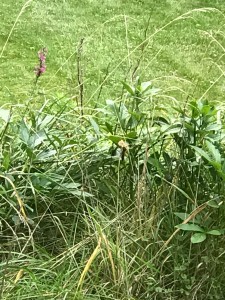 Let me tell you about my garden. Really it’s two gardens. There’s the old garden in the backyard, begun by the previous owners more than forty years ago. Once in the sun, now it’s very shaded by the trees that have grown taller and wider every year. It’s weed-choked and many of the flowers, except for the hardy peonies, are lost.
Let me tell you about my garden. Really it’s two gardens. There’s the old garden in the backyard, begun by the previous owners more than forty years ago. Once in the sun, now it’s very shaded by the trees that have grown taller and wider every year. It’s weed-choked and many of the flowers, except for the hardy peonies, are lost.
Then there’s the curated garden on the deck. The plants have been carefully chosen for their beauty and usefulness. We have some colorful flowers that I love to look at when we are relaxing outside. And there are fragrant and tasty herbs that I use in cooking. It’s deer proof, too.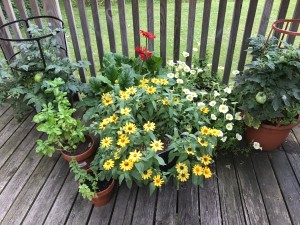
So, what does this have to do with the library?
A library is a lot like a garden. When the shelves get too crowded, it’s hard to see what’s there and it’s difficult to pull the books off the shelves. Like some flowers that go to seed or others that die, books begin to look old and tattered. They need to be deaccessioned -or weeded as it’s commonly called- from the library.
Gardeners are always looking for new plantings to replace those that have died back. The annuals flourish for just a season. They may reseed and last another season or two but they rarely flourish as they did when first planted.
Books, too, have a life span. That best seller may be popular for a while and then may sometimes have a second life if the author writes another book, or does something to bring him or her back into popularity. And there is always a spike when a well-known author dies.
But just as the dead annuals have to be pulled from the garden every year, those books that have outlived their popularity have to be “weeded,” especially if the library is small.
Then there are the books which have been updated because the information is no longer valid. Like those plants that have become unattractive and are replaced, new books are always replacing the old ones. Only the largest libraries have the luxury of keeping everything for that one patron who requests that old book sitting on the shelf.
There’s a handy acronym for a basic weeding policy: MUSTY. Each letter stands for one of the essential criteria used in evaluating a library collection:
Μisleading refers to books whose information or attitudes are outdated. For example, storybooks from the 50s or 60s do not depict modern 21st century Jewish life or attitudes. While the stories may be charming, little girls in 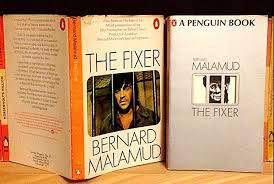 dresses and mommies in aprons just aren’t relevant anymore and do not attract readers. Of course, there are always exceptions to the rule.
dresses and mommies in aprons just aren’t relevant anymore and do not attract readers. Of course, there are always exceptions to the rule.
Ugly applies to the physical condition of a book. Does it look old-not valuable old but throw it out old? Is it torn, worn, smelly, dirty?
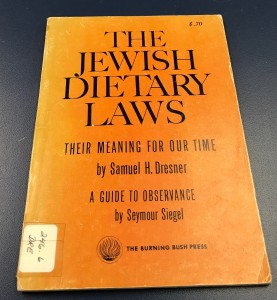 Superseded looks at the information. Is there more recent information on the topic? My favorite examples are two books I found in the school library that I took over in 1990. According to these books, there were 48 states in the United States and a moon landing was only a dream. Needless to say, they were promptly recycled. In a Judaica Library, for example, a really old book on kashrut won’t tell the reader how to deal with some of today’s appliances or even foods. How about quinoa? Microwaves?
Superseded looks at the information. Is there more recent information on the topic? My favorite examples are two books I found in the school library that I took over in 1990. According to these books, there were 48 states in the United States and a moon landing was only a dream. Needless to say, they were promptly recycled. In a Judaica Library, for example, a really old book on kashrut won’t tell the reader how to deal with some of today’s appliances or even foods. How about quinoa? Microwaves?
Trivial. Does the book even belong in the collection? Is it an important or interesting addition for readers? Is it well written?
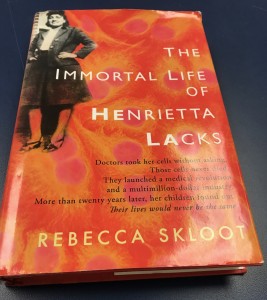 Your collection has no use for the book. The latest Stephen King, for example, may be a book everyone wants to read or the pictured book, which everyone should read, but it doesn’t belong in a Judaica library
Your collection has no use for the book. The latest Stephen King, for example, may be a book everyone wants to read or the pictured book, which everyone should read, but it doesn’t belong in a Judaica library
Not that it’s easy to discard a book, especially one in good condition. As I weed our library, I flip through the pages and remark upon how interesting so many of the books look. But do they have a place in a small, living library that does not have the luxury of being an archive? Unfortunately not.
In 1938, librarian Gladys Allison said, “I know no rules for discarding that eliminate possibility of error. We all make mistakes but most of these mistakes I am convinced stand on the (library) shelves.” I’m sure that that are some mistakes made in weeding our library. The Rabbi, a congregant, or a teacher may ask for something that’s no longer there, but it’s far better to be able to see the riches of our library than have everything crowded together
Many of the books weeded from our library are available in the BCCLS system and many others are available through interloan from a vast array of American and/or international libraries or through Amazon or other used book seller. So if there’s a book you REALLY want, you can have it. Just ask for help finding it.
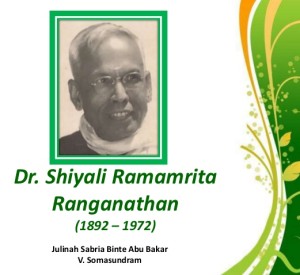 Here’s something every library user should remember, adapted from Indian librarian Ranganathan’s Five Laws of Librarianship.
Here’s something every library user should remember, adapted from Indian librarian Ranganathan’s Five Laws of Librarianship.
1. Books should be used.
2. There’s a book for every reader no matter what his or her interest.
3. There’s a reader for every book no matter what the book is about.
4. Save the reader time by making books easy to find.
5. A library is a living, growing entity and needs constant change and updating,
As Anne Felix, a librarian from Texas, says, “A good library collection is like a good haircut. It’s not what you cut…it’s what you leave.”
Hope you like the library’s “trim.”
- Is It Passover Yet? - Thu, Apr 18, 2024
- MESH Report April 9, 2024 - Thu, Apr 11, 2024
- Guess Who? - Wed, Mar 13, 2024
